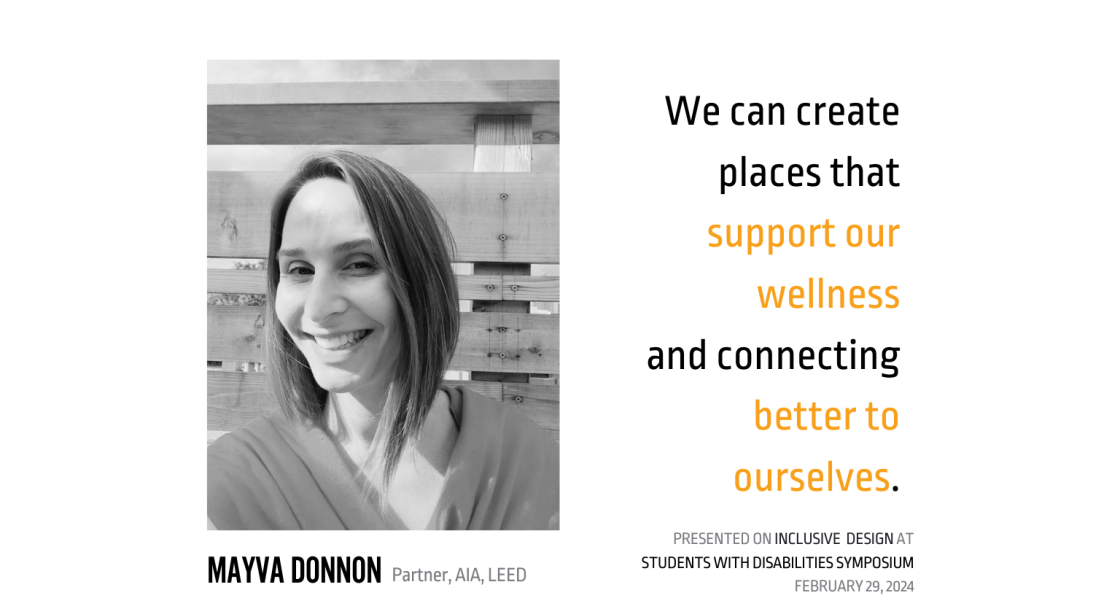Empathy is a cornerstone of sustainable design and continues to direct the build industry’s principles, as a direct reflection of society’s awareness and support for neurodivergent populations and people with disabilities. This is evidenced in both the explosion of the general public’s awareness of neurodiversity and research efforts to best support people with intellectual and physical disabilities as well as the build industry’s response of constructing and renovating more schools and places that support vulnerable populations.
Compiling a strong body of resources to guide this ethos of compassion in design, the Association for Learning Environments (A4LE) hosts year-round programming to support those at the intersections of build and education. Originating in 1921 as the National Council on Schoolhouse Construction, the A4LE has acted as a leader in developing the evolution of learning environments for over a century. The non-profit advocates for learners needs and adapting best practices to support students of all levels through partnership with interdisciplinary partners across administration, planners, builders and designers.
The 2024 Students with Disabilities Symposium was hosted in Charlotte, NC from February 27 to February 29th. KSS Partner Mayva Donnon presented an enlightening case study entitled Including Students with Disabilities Through An Integrated Programming Approach and Human-Centric Design. Insightful and encouraging, this presentation serves as a practical application of Mayva’s strengths not only as an architect but also her passion for inclusive design. “When you think about designing for the most vulnerable parts of our population, you end up creating a space that’s better for everybody,“ Mayva explained. “The impact that good design has or the detriment that bad design has is much more visible in folks who may not have all of the coping mechanisms.”
Mayva’s leadership over the last decade has allowed KSS to become an expert in inclusive design. This is due in part of Mayva’s keen insight on trusting her instincts and utilizing data to reinforce those inclinations. As the human-centric approach is still relatively fresh, Mayva explained the impact of projects like the Bancroft school, Eden Autism Institute and Kingsley Learning Institute was directly correlated with their research process. “A lot of what we learned was from listening to clinicians, and observing what we were seeing and benchmarking,” Mayva stated. “So, there’s more to draw from now that proves out intuitively some of the things that we know or sensed.”
Considering that Bancroft was one of KSS’ earliest projects in this division makes the project so much more impressive because of how impactful it has become in the industry. Multiple presenters at the Symposium referenced the project specifically as an influence and inspiration. Mayva illustrated that this example resonates with so many other architects because it shows that you can apply the same touches to diverse locations and projects. “Creating a space that supports community for a group of people that inherently have difficulty with social situations can give you a lot of lessons about what makes people feel comfortable and less anxious about entering and engaging in a space that are invaluably useful for a lot of different settings like campuses.”
Reflecting on a case study that posed the question of why physical spaces matter, the answer—much like design—always comes back to being compassionate and embracing our humanity. ‘We can create places that support our wellness and connecting better to ourselves,” Mayva mused. “What makes a good design for somebody with autism has an awful lot in common for a good workplace or a good campus center or any other places that humans will occupy because there’s a lot more that unites us than makes us different.”

